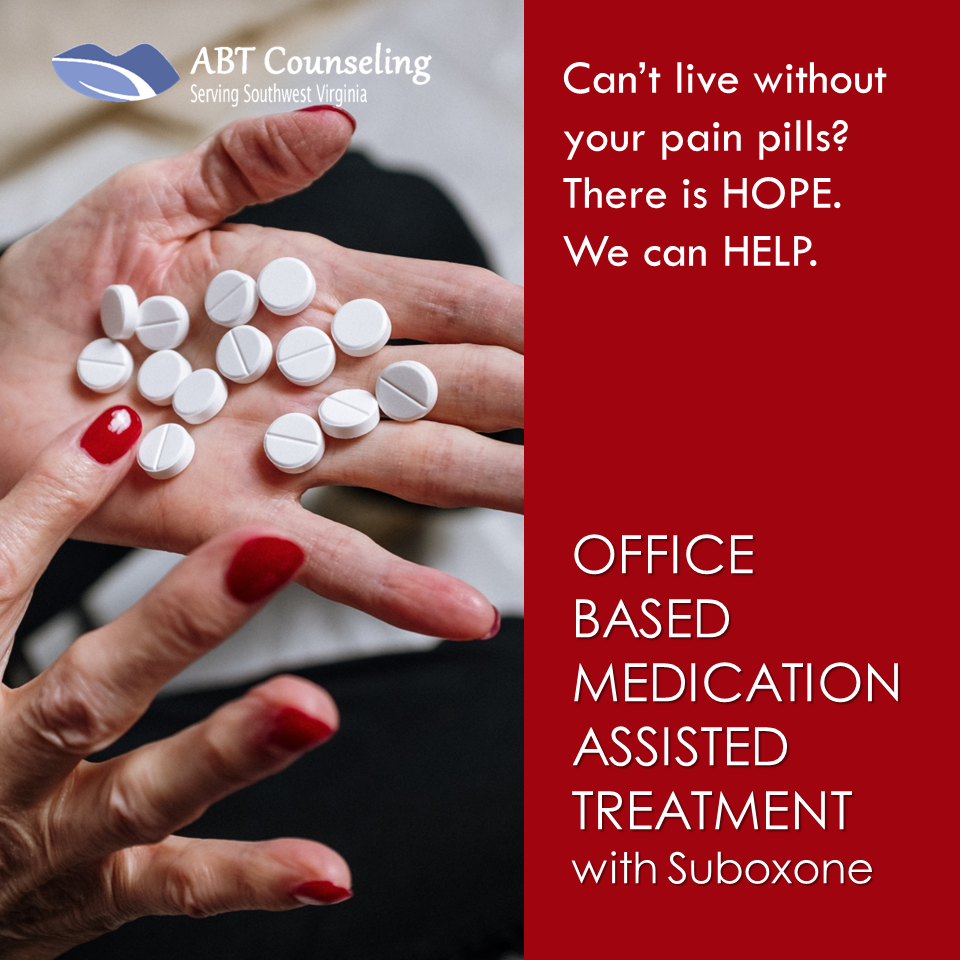FRIDAY REPRINT -- What is OBOT?
Office-Based Opioid Treatment Programs – also called OBOTs – are a type of outpatient addiction treatment designed for people living with opioid use disorder (OUD). OBOTS are classified under the general umbrella of Medication-Assisted Treatment (MAT), which is the gold-standard therapeutic approach for treating people with OUD.
This article will focus on OBOTs that treat patients with Suboxone, which is the commercial name for a combination of two medications: buprenorphine and naloxone. Together, buprenorphine and naloxone work to minimize opioid withdrawal symptoms, reduce opioid cravings, and block the effects of opioids in the brain and body.
We’ll discuss the benefits of Suboxone therapy in OBOTs in a moment – but first, we’ll offer a quick primer on OBOTs, why they exist, where they fit in the broad continuum of addiction treatment, and how they support recovery from opioid addiction in particular.

OBOTs: A Brief History
In the year 2000, after three decades of research confirmed the effectiveness of MAT for people living with opioid use disorders, the U.S. Congress passed the Drug Addiction Treatment Act (DATA 2000).
This act accomplished several important things for addiction treatment at the time. In hindsight, the passage of DATA 2000 appears remarkably prescient. In addition to allowing for the formation of OBOTs 20 years ago, when the main opiate of addiction was heroin, it created a precedent for a robust local, state, and federal response to the prescription opioid crisis we’re living with today.
But we’re jumping ahead.
Here’s what DATA 2000 did:
- Expanded access to treatment for people living with OUD
- Allowed physicians to apply for waivers outside pre-existing Drug Enforcement Agency (DEA) guidelines in order to prescribe MAT medication for patients with OUD.
- Established an environment – meaning a shift in cultural, social, and political attitudes toward MAT – that enabled the Food and Drug Administration (FDA), in the year 2002, to approve the use of buprenorphine.
- Created payment mechanisms for physicians treating patients with OUD
- Enabled the formulation of billing practices for the medications, counseling, and therapy common to OBOTs.
- Increased access to MAT for patients.
- Increased the ability of physicians to offer MAT to patients.
- Provided access to a more personal approach to treatment for OUD.
- Allowed primary-care physicians to prescribe buprenorphine.
- Formed the foundation of the Comprehensive Addiction and Recovery Act (CARA), passed by Congress in 2016.
- CARA enabled nurse practitioners (NPs) and physician assistants (PAs) to prescribe and dispense MAT medications such as buprenorphine.
One thing to understand about DATA 2000 and CARA is how they helped remove the stigma around and expand access to MAT. By enabling primary care physicians – and later NPs and PAs – to prescribe medications like Suboxone in outpatient settings, the formation of OBOTs (thanks to DATA 2000 and CARA) gave patients who were reluctant to enter residential treatment, intensive outpatient treatment, or partial hospitalization programs a new way to receive a potentially life-saving treatment for OUD.
Now, next up for discussion: how OBOT programs – also known as Suboxone clinics – help people overcome opioid addiction.
OBOTS: Benefits for Opioid Use Disorder
When thinking about OBOT programs, it’s crucial to know that the medications involved are only a part of the treatment patients receive. The medications – such as Suboxone – help move patients out of active addiction and into a mental, physical, and psychological space in which they’re open to and capable of receiving a full continuum of comprehensive, integrated treatment for OUD.
We’re not downplaying the role of medication: we’ll provide data below to support its effectiveness. What we’re saying is that medication is one piece of the larger function of OBOT programs in addiction treatment.
In addition to the appropriate use of regulated medication, the American Society of Addiction Medicine (ASAM) established a set of best practices for OBOT programs that included the following treatment components:
- Individual, group, and family counseling
- Psychiatric care
- General medical services
- Family support
- Addiction education
- Vocational counseling
- Legal counseling
Since not every OBOT has the resources to provide all the treatments above in one location, they’re required to establish working relationships and referral pathways to providers who can provide a complete range of support to people with OUD. In addition to the program components listed above, most OBOT programs include access to community supports such as Narcotics Anonymous (NA), SMART Recovery, or Refuge Recovery.
OBOTS: Why Suboxone?
Now we’ll move on to the benefits of MAT, with a focus on the benefits of Suboxone.
Studies show that in comparison to treatment without medication, people with OUD who participate in OBOT programs utilizing Suboxone show improvements in:
- Time-in-treatment
- Family relationships
- Social functioning
- Ability to seek, gain, and maintain employment
- Physical and mental health
- Lifestyle habits (eating well, sleeping consistently, etc.)
- Self-esteem
- Financial status
In addition, people with opioid use disorder who receive medication-assisted, office-based opioid treatment show significant decreases in:
- Opioid cravings
- Opioid relapse
- Illicit opioid use
- Criminal behavior
- Involvement with the judicial system
- Mortality rates
Let’s look at a couple of those bullet points, starting with the last: mortality rates. What exactly does that mean? It means that the death rate for untreated people with OUD is nine times greater than for those treated with medication.
That’s what we mean when we say a medication like Suboxone can save lives – because it does.
Next, let’s look at the first bullet point: time-in-treatment. Research shows that the longer an individual in recovery from a substance use disorder stays in treatment, the better the treatment outcomes will be. This is true for people living with OUD: the longer someone with an OUD stays in treatment, the greater their chance at a positive outcome.
As for all the other benefits of OBOT programs with Suboxone, such as improved family relationships, reduced criminal activity, improved physical and mental health, and the ability to seek, gain, and maintain employment, those demonstrate a perfect consonance with a core component of recovery, as defined by the World Health Organization (WHO):
“Recovery is a process through which one gradually achieves a greater balance of mind, body, and spirit in relation to other aspects of one’s life, including family, work, and community.”
Also, did we mention that MAT saves lives?
While the additional positive outcomes of OBOT programs with Suboxone are compelling, the mortality data alone is enough to convince many people that they’re essential components of any large-scale attempt to address the opioid crisis in the U.S.

Community Approach to Treatment
The best treatment for OUD involves addressing not only the entire individual – i.e. offering support that heals the mind, body, and spirit – but also the family of the person in recovery and the community in which they live.
What we see with the rise of OBOT programs, in general, is the gradual acceptance of addiction treatment in the communities they serve. When local residents understand the presence of an OBOT program in their community helps to restore balance to families, reduces unwanted behaviors in individuals living with addiction, and improves the overall quality of life for everyone in the community, then things change: neighbors rally together to move forward and face the opioid crisis – and all types of substance use disorder – with renewed energy, hope, and optimism.
*This article first appeared at pinnacletreatment.com, August 23, 2019.*










